
- Share via
California is a place of magnificent tectonic forces that lift mountains only for them to be constantly eroded by glaciers, wind and rain, ground down to one of the most basic commodities on Earth: sand.
Sand covers our deserts, creates our foothills and fills our arroyos. It blankets the shores and piles into towering dunes. It’s everywhere.
So why are Californians fighting one another for it?
The sand wars are being waged up and down the coast on levels both micro and macro, as beachgoers, neighbors and cities quarrel over their share of a seemingly infinite resource. As beaches shrink, lines are now literally being drawn in the sand.
The situation has gained urgency in recent decades, as rising seas and coastal development derailed the normal cycles of sand replenishment. The U.S. Geological Survey estimates that California could lose up to 75% of its beaches in the next 75 years.
Beaches are typically places of rest and relaxation, but some are becoming as tetchy about elbow room as a Manhattan sidewalk.
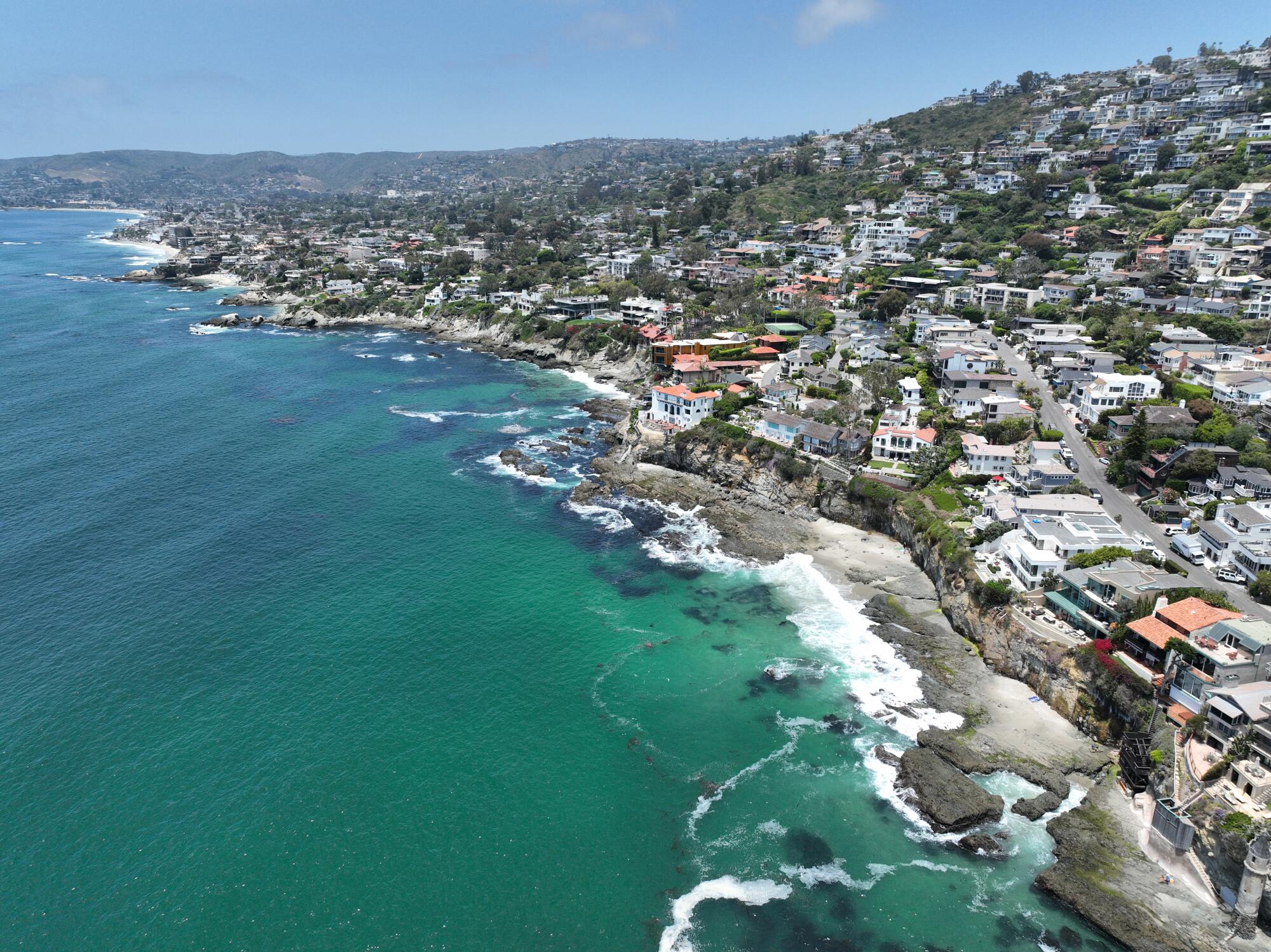
In July, a Laguna Beach homeowner went viral on TikTok after screaming at a family to get off what she wrongfully claimed was her property and hastily installing a rope barricade to block off the section of sand in front of her home.
“Karen of the week,” said the woman filming the video.
Shortly after, the California Coastal Commission hit the homeowner with a violation notice for harassing beachgoers, ordering her to remove the rope barrier from the beach or face a fine of $11,000 per day.
On the beach, fights in the sandbox come with big lawyers and big buckets.
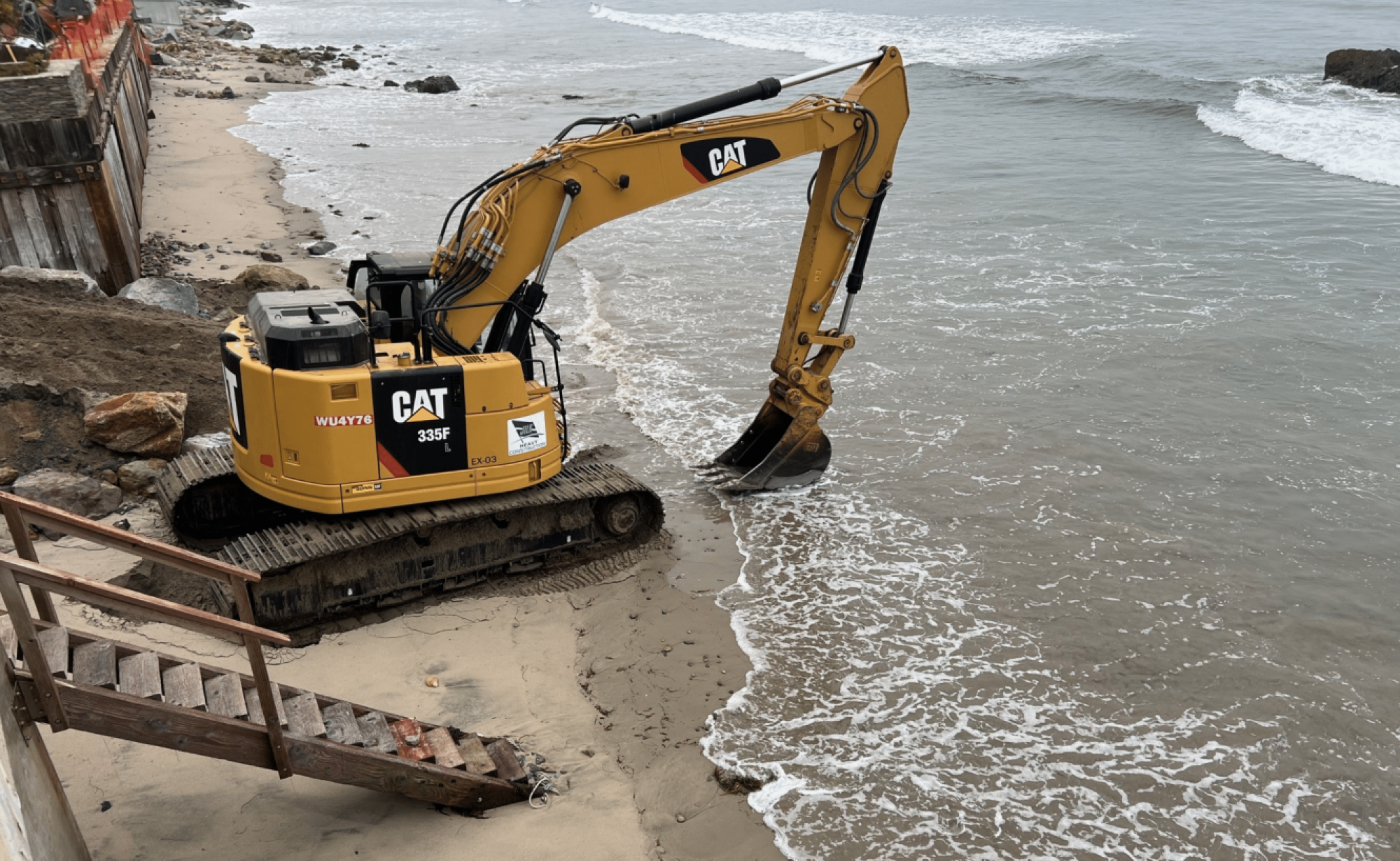
In Malibu, the ultra-wealthy are fighting it out in the enclave of Broad Beach. Business titan James Kohlberg is suing his neighbor, billionaire Mark Attanasio, for allegedly stealing sand from the beach with excavators.
Kohlberg’s lawsuit accuses Attanasio, who owns the Milwaukee Brewers, of scooping up public sand and carrying it back to his property as part of a construction project.
Broad Beach — where houses hover just above the water, propped up on deteriorating seawalls bashed by crashing waves — needs all the sand it can get.
“It does get a little awkward being so close to the houses,” said Maggie Taylor, who lies out on Broad Beach every few weeks during the summer. “Depending on where the tide is, I can end up a few feet away from someone’s property.”
Taylor said she doesn’t want to invade anyone’s privacy, but she knows the beaches are for everyone to enjoy. And she doesn’t mind exercising that right.
That hasn’t stopped the rich from trying to block access, going as far as painting fake garage doors or posting false “No Parking” signs to dissuade beachgoers from parking near their properties.
But as the ocean slowly reclaims the sand in Broad Beach, a factor even more critical than pesky sunbathers is at play for homeowners: real estate values.

Over the last few decades, Malibu has emerged as one of the priciest communities in the country — primarily on the beach. Oakley founder James Jannard set a California price record when he sold his Malibu beach house for $210 million. Yet just two miles inland, a plot of land is currently available for $179,000.
What happens to a beach house when there’s no more beach?
Erosion has become such a problem in Broad Beach that high-profile residents such as Dustin Hoffman, Ray Romano and Pierce Brosnan committed their own money to a $31-million restoration project to bolster the beach’s sand and protect the value of the community’s 121 parcels, many of which were purchased for $20 million or more.
The resident-funded initiative involves trucking in sand from quarries in Simi Valley and Moorpark.
It’s a high price tag for a short-term solution, according to Brett Sanders, a professor of civil and environmental engineering at UC Irvine. Sanders said sand costs about $30 per cubic yard to ship. A modest nourishment would be about 100,000 cubic yards — so roughly $3 million.
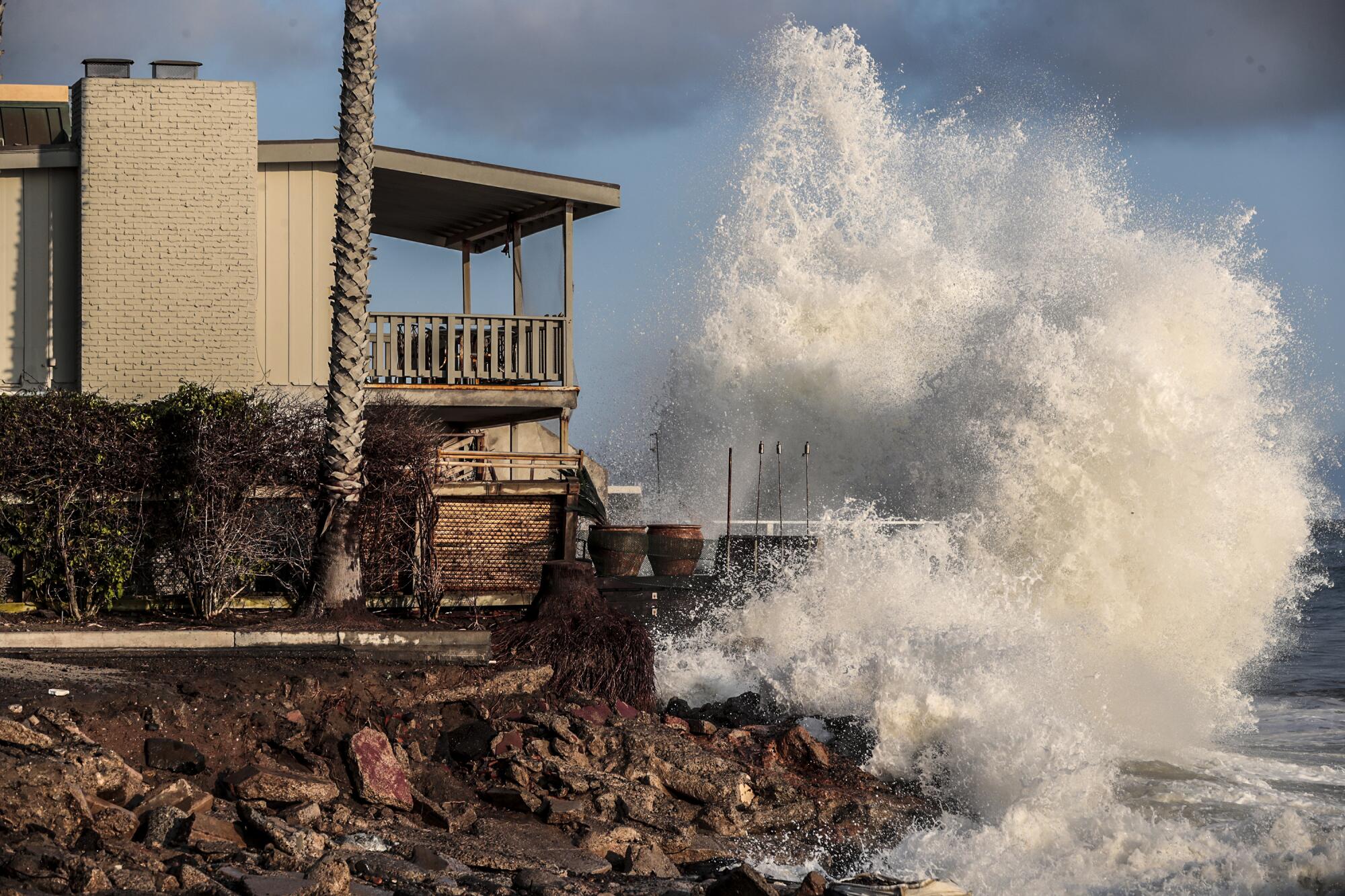
But how long does the new sand last? It depends. A 1960s nourishment of Capistrano Beach in Orange County lasted for about two decades before thinning out, Sanders said. But some projects last only a matter of months before the fresh sand is pulled back into the water.
According to Sanders, however, that’s not such a bad thing.
“When sand gets pulled under, it refills the coastal area near the shore. Sand has to be under and above the water for a beach to be healthy,” he said. “Small amounts of sand go under quickly, but the more we have, the more the beach recovers.”
Sand flowing in and out of beaches is a natural process. It typically flows in through rivers, but that has been slowed down by dams designed to hold back sediment. It also comes from cliff erosion, but that has also stopped in some areas as Southern Californians cram houses onto cliffs and stabilize the slopes so their homes don’t careen into the sea.
It flows out by the force of heavy waves and strong rip currents, which drag sand off the beach, where it is transported by deeper currents laterally up and down the coast. Gentler waves bring the sand back to shore, which is why the beaches grow during the calmer seas of summer. But the currents are kingmakers, stealing mountains of sand away from some beaches and dropping it off at others.
That’s part of the reason why some Orange County beaches are suffering while others, such as Huntington Beach, are growing by roughly 3 feet each year.
“Solutions require a collective mindset where your project might help the beach next to you,” Sanders said. “Sand is shared, and it takes coordination across communities.”
Easier said than done for some California cities.

Take Carlsbad, which Mother Nature has smiled upon. Carlsbad’s pristine beaches grow roughly 3 feet wider each year.
Its northern neighbor, Oceanside, isn’t so lucky. The city’s beaches shrink by more than 3 feet each year, and much of its coastline is covered in rocks.
Housing demand in Carlsbad is high, with a median home value north of $1.5 million. Meanwhile, Oceanside is a beach town without much beach left, reflected by a much lower median home value of $876,000.
Of course, plenty of factors play into real estate values. Oceanside has long been a working-class, military city, and wealthier Carlsbad is home to deep-pocketed retirees and investment properties. Still, for two cities sitting side by side on the California coast, the difference is stark.
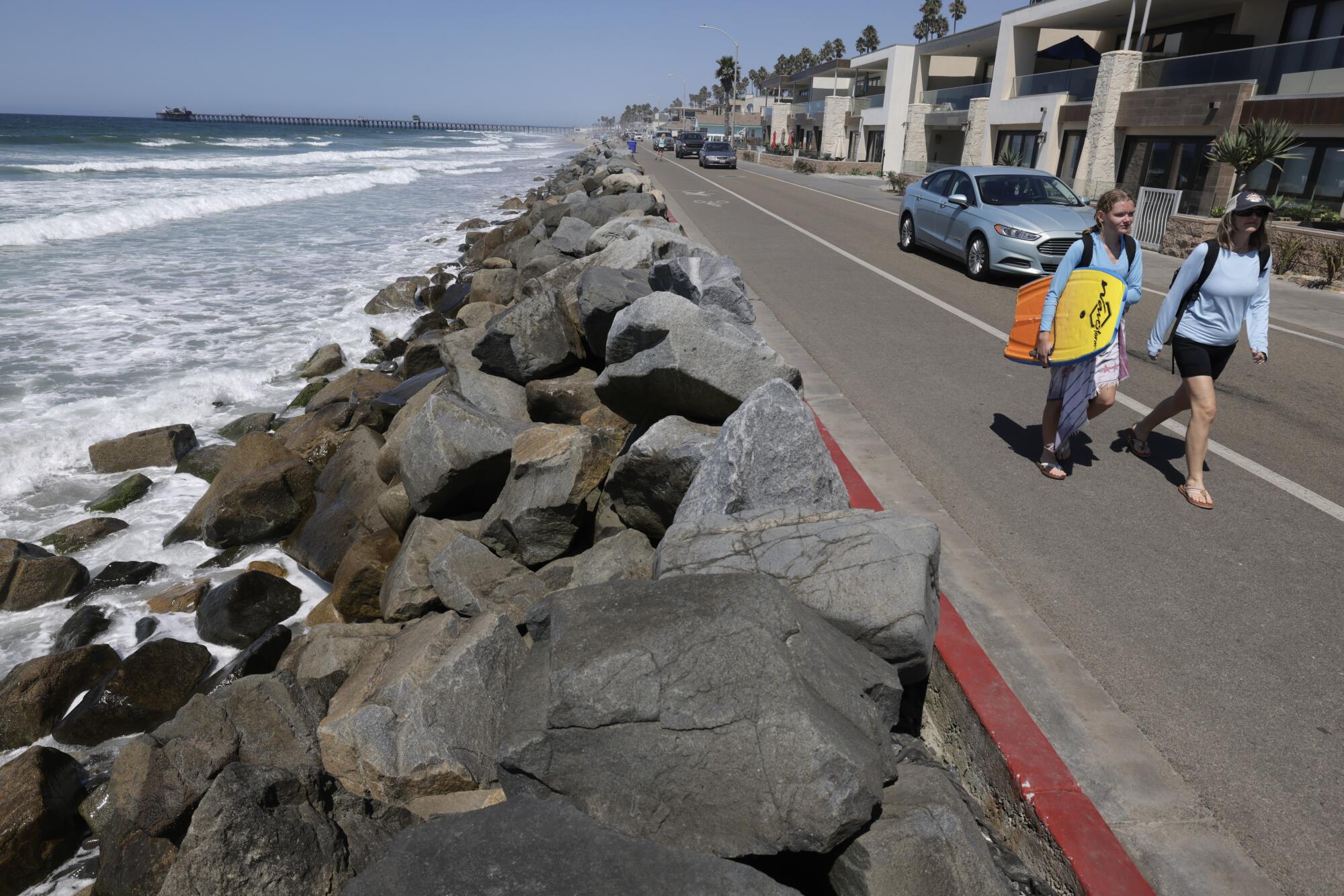
For beach cities, sand is a ticket to a brighter future. Higher home prices lead to more property taxes, and that’s why Oceanside has been fighting hard to keep its beaches.
The struggle stretches back to World War II, when Camp Pendleton Boat Basin was constructed, jutting out into the Pacific and diverting sand flowing south offshore to bypass Oceanside. The city has been slowly losing sand ever since, bringing in more than 20 million cubic yards over the years to replace it, according to the Coast News Group.
Carlsbad has kept a close eye on Oceanside’s efforts, which at one point included a plan to install long, narrow structures called groins that trap and accumulate sand. Carlsbad worried the groins would cut off sand supply to its own beaches, and the City Council passed a resolution opposing the plan.
The logic: There’s only so much sand floating around in the ocean. If one city disrupts the natural flow to claim some for itself, it takes away from others.

“I wish Oceanside would be more aggressive and do what they have to do to bring back the beaches,” said resident Josh Palmer, saying crime and homelessness has gotten worse in recent years as the beaches keep shrinking. “Carlsbad has plenty of sand. They’ll be just fine.”
In 2022, Oceanside launched an international design competition to find a less controversial solution. Pitches included floating islands, underwater kelp forests and dune systems. The city ended up choosing a plan that calls for two “speed bumps” made of permeable berms to stabilize sand at the high end of the beach, as well as an artificial reef that slows down the currents carrying sand away.
The project is in the analysis and design engineering phase. Construction is slated to begin in 2026.
Cities are working to even out the sand supply across Southern California. Last year in Orange County, the U.S. Army Corps of Engineers dredged 1.2 million cubic yards of sand off the coast of Surfside and Sunset beaches to deposit along a stretch of beach south of Naval Weapons Station Seal Beach, eventually flowing through currents to Bolsa Chica, Huntington Beach and Newport Beach.
San Clemente approved a $2-million emergency project over the summer to replace lost sand. In November, voters there will cast ballots on a “sand tax” measure that would add a half-cent sales tax and generate roughly $6.75 million a year to help replenish the coast.
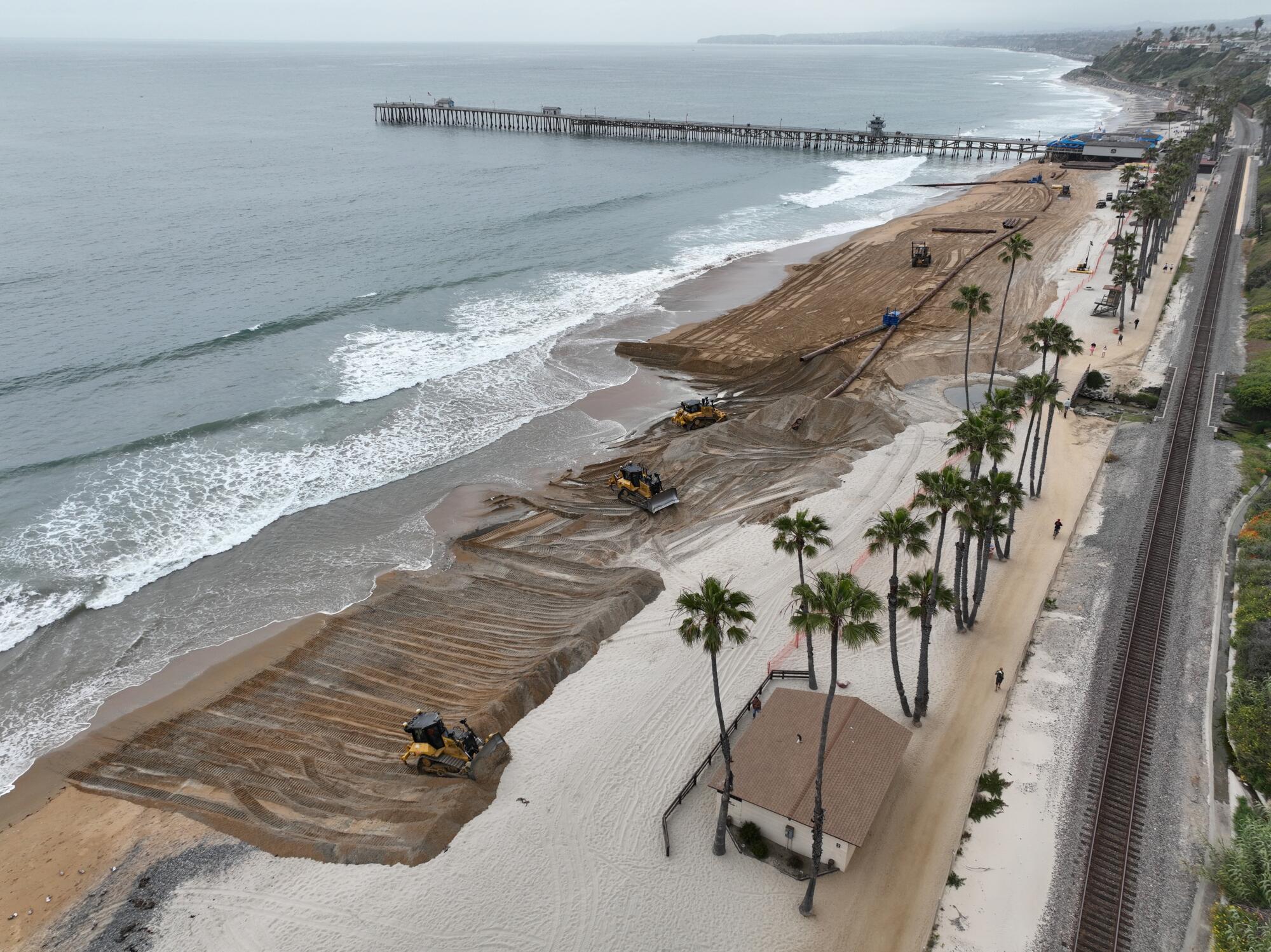
L.A. County tapped the Bay Foundation, among many others, to help bolster its coastlines. The nonprofit is developing “living shorelines” by installing dunes around beaches in L.A., El Segundo, Malibu, Santa Monica and Newport Beach.
The foundation plants native vegetation on the dunes, which blocks wind and accumulates sand — no dump trucks necessary. When done correctly, the dunes can grow 3 feet tall in roughly four years.
“I don’t like the vision of L.A. without a beach,” said Bay Foundation Chief Executive Tom Ford. “It’s like New York City without Central Park or Paris without the Eiffel Tower.”
Ford said that even though Californians fight over sand, everyone recognizes how important beaches are, and reception to the project has been overwhelmingly positive.
“This is a sustainable, nature-based solution,” Ford said. “If you build a jetty to stop sand from moving, you benefit but the folks downstream lose. Your sand today is your neighbor’s sand tomorrow, so we need to look at how to manage it collectively.”
More to Read
Sign up for Essential California
The most important California stories and recommendations in your inbox every morning.
You may occasionally receive promotional content from the Los Angeles Times.











